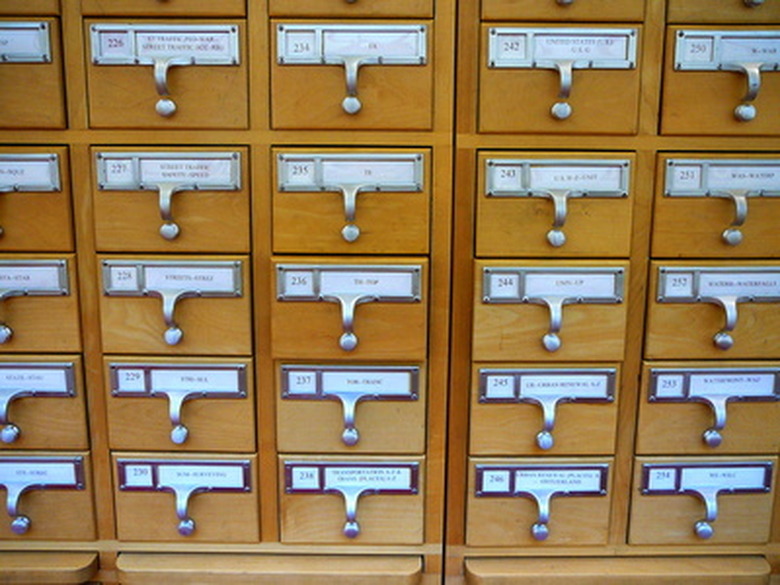How To Learn Alphabetical & Decimal Number Filing Systems
Having an effective filing system can save you time and energy when you have important information that needs to be recalled quickly from a large volume of files. There are two kinds of filing systems, those using numbers, or numeric systems, and those using letters, or alphabetic systems. Learning how to use these systems is essential in order to decide on the one that is best for you. While there are several categories, understanding the basics of these filing systems is easy.
Step 1
Decide on the type of alphabetic and numeric system that would work best for the types of documents that you wish to file. There are three basic alphabetic systems to consider and four numeric systems, the most common of which is the decimal system. The three alphabetic systems are topical, encyclopedia, and geographic.
Step 2
Begin by defining the "topical alphabetic" system. This is also known as the "dictionary" system and is the easiest to understand. In this case each file is giving a title and those titles are arranged in alphabetical order from A to Z. They are not grouped into subjects and do not have categories so this system is usually best for smaller amounts of files.
Step 3
Understand the "encyclopedia" or "classified" system. In this system, there are large overarching headings or subjects, such as history or philosophy, that have smaller subjects grouped alphabetically inside them. If it's required, there can be additional files arranged alphabetically inside these subheadings. For example, in history you could have subheadings titled with decades and inside those files, files designating certain aspects of history such as technology or war. These subcategories can continue until you feel the filing system is efficient for you.
Step 4
Consider learning the "geographic" system for documents containing information relating to places. Much like the encyclopedia system, this system has major categories such as countries or states with subcategories such as cities or towns filed within them in alphabetical order.
Step 5
Understand at least the basics of decimal filing systems. This is the Dewey Decimal System which is most often used by libraries to categorize books and reference materials by call numbers. In this case, you can have no more than 10 categories because of the decimal restriction of only using numbers zero through nine. These ten categories can then be subdivided into 10 additional categories as often as needed in the same way that the encyclopedia alphabetic system works.
Step 6
Break down the decimal system into easy to learn chunks. For example, perhaps your current library requires that you have three decimal places so your ten categories would be listed as 000, 100, 200 and so on, each with a title. Inside each of these would be subcategories such as 002 or 103 until all the decimals have been filled. In this case the 002 stands for a category in the 000s and the 103 stands for a category in the 100s. This system is good for extremely large volumes of information as the decimals can be expanded and added to as needed.
TL;DR (Too Long; Didn't Read)
If formal training makes learning easier, you could consider taking a filing class in your local community college's business department or you could take a library science class for the more complicated decimal system.
Cite This Article
MLA
Johnson, Shannon. "How To Learn Alphabetical & Decimal Number Filing Systems" sciencing.com, https://www.sciencing.com/learn-decimal-number-filing-systems-7766009/. 24 April 2017.
APA
Johnson, Shannon. (2017, April 24). How To Learn Alphabetical & Decimal Number Filing Systems. sciencing.com. Retrieved from https://www.sciencing.com/learn-decimal-number-filing-systems-7766009/
Chicago
Johnson, Shannon. How To Learn Alphabetical & Decimal Number Filing Systems last modified March 24, 2022. https://www.sciencing.com/learn-decimal-number-filing-systems-7766009/
